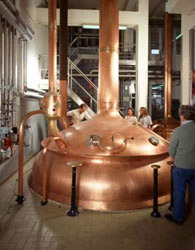Boak and Bailey provoked what turned into a longread last week by asking “What’s the reference beer for each style? Especially more obscure styles, we suppose.” @BoakandBailey quickly added, “So, to clarify: reference doesn’t necessarily mean the best, just the most representative. If you’d never had style X before, would that beer help you understand it?”
Start at the top, keep scrolling, take your time, feel free to wander off into some of conversations within the conversation. I’ll wait.
QUESTION: What's the reference beer for each style? Especially more obscure styles, we suppose.
Wit = Hoegaarden
Saison = Dupont
ESB = Fuller's, obviously
Mild = ???
Gose = ???
Etc. pic.twitter.com/KuhIMP8yIy— Boak and Bailey (@BoakandBailey) October 16, 2019
At the end, @joelandrewwinn writes, “Curious to see the responses when North America wakes up tomorrow. My guess is there will be opinions.” If comments broke out, I didn’t find them. That doesn’t matter. This isn’t about the best American reference for a mild (although Rocksteady on cask at Good Word Brewing in Duluth, Ga., was awfully good Saturday before last). Or a reference for Americanized or “traditional” German pilsner, or pastry stout or whatever.
 InBev has given up moving Hoegaarden out of the city of the same name, the place that it originated.
InBev has given up moving Hoegaarden out of the city of the same name, the place that it originated.